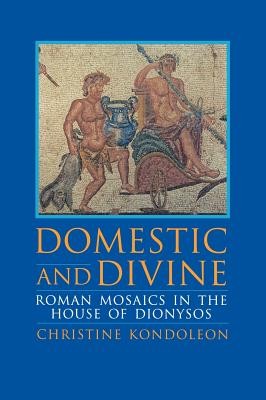
- We will send in 10–14 business days.
- Author: Christine Kondoleon
- Publisher: Cornell University Press
- ISBN-10: 0801430585
- ISBN-13: 9780801430589
- Format: 17.8 x 25.4 x 2.2 cm, kieti viršeliai
- Language: English
- SAVE -10% with code: EXTRA
Reviews
Description
Built on the southwestern coast of Cyprus in the second century A.D., the House of Dionysos is full of clues to a distant life--in the corner of a portico, shards of pottery, a clutch of Roman coins found on a skeleton under a fallen wall--yet none is so evocative as the intricate mosaic floors that lead the eye from room to room, inscribing in their colored images the traditions, aspirations, and relations of another world. In this lavishly illustrated volume, Christine Kondoleon conducts us through the House of Dionysos, showing us what its interior decoration discloses about its inhabitants and their time.
Seen from within the context of the house, the mosaics become eloquent witnesses to an elusive dialogue between inhabitants and guests, and to the intermingling of public and private. Kondoleon draws on the insights of art history and archaeology to show what the mosaics in the House of Dionysos can tell us about these complex relations. She explores the issues of period and regional styles, workshop traditions, the conditions of patronage, and the forces behind iconographic change. Her work marks a major advance, not just in the study of Roman mosaics, but in our knowledge of Roman society.
EXTRA 10 % discount with code: EXTRA
The promotion ends in 23d.12:06:27
The discount code is valid when purchasing from 10 €. Discounts do not stack.
- Author: Christine Kondoleon
- Publisher: Cornell University Press
- ISBN-10: 0801430585
- ISBN-13: 9780801430589
- Format: 17.8 x 25.4 x 2.2 cm, kieti viršeliai
- Language: English English
Built on the southwestern coast of Cyprus in the second century A.D., the House of Dionysos is full of clues to a distant life--in the corner of a portico, shards of pottery, a clutch of Roman coins found on a skeleton under a fallen wall--yet none is so evocative as the intricate mosaic floors that lead the eye from room to room, inscribing in their colored images the traditions, aspirations, and relations of another world. In this lavishly illustrated volume, Christine Kondoleon conducts us through the House of Dionysos, showing us what its interior decoration discloses about its inhabitants and their time.
Seen from within the context of the house, the mosaics become eloquent witnesses to an elusive dialogue between inhabitants and guests, and to the intermingling of public and private. Kondoleon draws on the insights of art history and archaeology to show what the mosaics in the House of Dionysos can tell us about these complex relations. She explores the issues of period and regional styles, workshop traditions, the conditions of patronage, and the forces behind iconographic change. Her work marks a major advance, not just in the study of Roman mosaics, but in our knowledge of Roman society.


Reviews